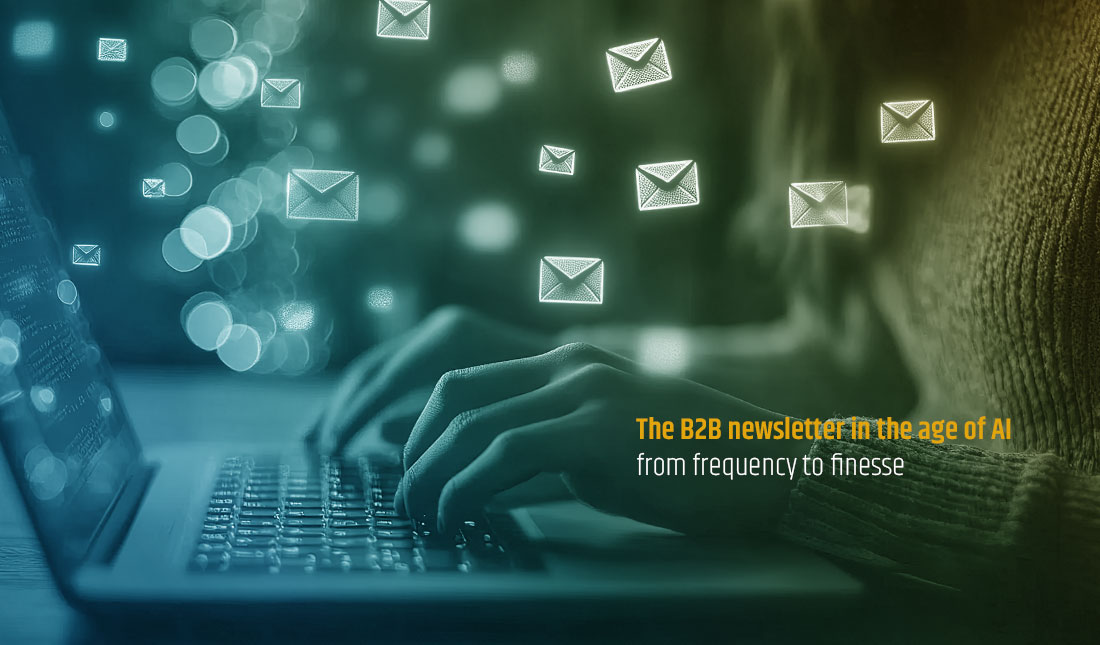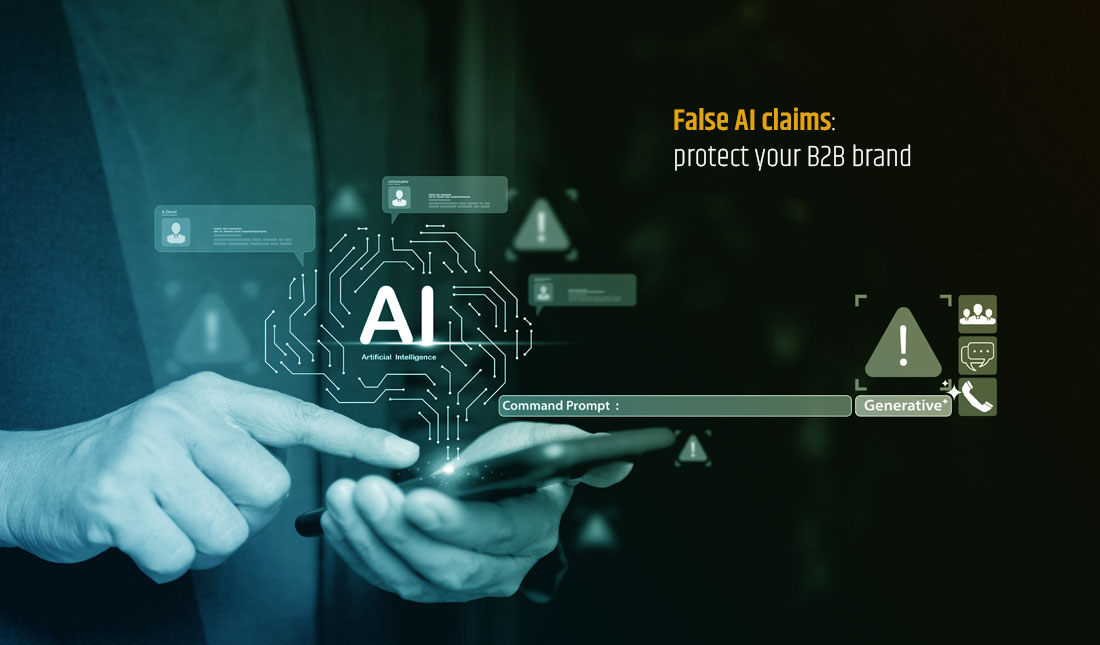
How many artificial intelligences does it take to run a B2B focus group? Just one! It creates the group. Then it plays the participants and finally moderates the discussions. And it does so without ever asking for a coffee break. Or blueberry muffins.
Joking aside, for over a year now, we have been observing a subtle but profound transformation in the world of qualitative B2B research. Artificial intelligence is no longer content with automating or optimizing our campaigns, or even just processing large volumes of data.
It is now entering areas where we did not yet expect it, right at the heart of human interaction. B2B focus groups, long considered the exclusive domain of humans, are now augmented, and sometimes even partially simulated, by AI. And that’s where the real change begins.
At ExoB2B, we have been conducting marketing research for 23 years. We have designed, facilitated, analyzed, and more for B2B focus groups. For us, it’s not a technical step: it’s a key moment when real things are said. It’s where ideas clash, reactions are spontaneous, and objections finally come out.
So naturally, when we saw that it was possible to simulate a B2B focus group using artificial intelligence, we wanted to understand. Not to sideline humans in the process, but to better understand what this technology can actually bring to our practice.
Rethinking the B2B focus group: a strategic tool that is too often underestimated
Furthermore, a B2B focus group is not simply a gathering of opinions around a table. It is a qualitative method that seeks to uncover the why behind the what. Unlike quantitative surveys, which are mainly used to measure or validate, B2B focus groups seek to explore, understand, and bring to light often unknown signals.
That said, this exploratory work becomes particularly valuable at key moments in a project. When rethinking an offer, preparing to launch a new product or service, wanting to validate messages, or seeking to better understand a little-explored market segment.
In B2B marketing, where purchasing decisions are long, complex, and often collective, these discussions allow us to grasp dynamics that are invisible to dashboards. In other words, the influence between colleagues, resistance to change, perception of risk: all of this is revealed, sometimes implicitly, in a well-run group.
What has changed for a B2B focus group with artificial intelligence
Until recently, organizing a focus group involved recruiting the right profiles, bringing them together at the right time, relying on an experienced moderator, and then spending hours analyzing the discussions. This remains true. But with artificial intelligence, the relationship to time, access to information, and situational context is changing radically.
Today, it is possible to simulate exchanges between typical profiles. To create credible avatars based on well-defined personas. But also to test messages in a controlled environment, generate objections, follow-ups, and even disagreements.
What does this allow us to do, in concrete terms? Prepare one or more real groups more effectively, test hypotheses, identify blind spots, and all without having to mobilize your customers yet.

How to generate a B2B focus group with artificial intelligence: a user guide
It’s not magic, but rather a method. It all starts with a good understanding of the context: what sector are we working in, what decision needs to be informed, how complex is the purchasing process, etc.?
Once this has been defined, we can move on to building personas, which must be based on solid data: job title, role in decision-making, hierarchical level, motivations, obstacles, etc.
The richer the source material, the more credible the simulated exchange will be.
Next comes the stimulus testing phase. You can inject a value proposition, a marketing message, a visual, a feature, or even a prototype interface. The simulation then begins, and the avatars interact based on these elements.
The “artificial” moderator in a B2B focus group: a methodological innovation
This is where a real turning point is taking place. Systems such as Focus Agent, an artificial intelligence moderator designed to distribute speaking time, frame the discussion, and restart exchanges, are now capable of playing the role of facilitator.
In some recent studies, the results obtained by this type of agent have proven to be comparable to those of human groups, with a surprising level of consistency, opposition, and simulated engagement.
It should be noted that this is still an evolving field. It would be unwise to draw definitive conclusions. However, our initial modest uses, integrated into real client projects, show that the tool can be extremely powerful when properly framed.
What AI can do (and what it will never replace)
There is a line that AI cannot cross. It will never pick up on heavy silences, averted gazes, nervous laughter, or sighs of annoyance. These subtle signals, micro-emotions, and tiny but meaningful gestures can only be perceived by attentive humans. And that is what a good moderator picks up on. Not a machine.
Objective
- Explore a perception
- Test a promise
- Prepare a real focus group
- Save time
- Reduce bias
AI usage
- Simulate reactions to a slogan
- Provoke exchanges between profiles
- Identify sensitive angles
- Identify trends before the field
- Test divergent scenarios
That’s why at ExoB2B, we don’t replace our B2B focus groups with artificial intelligence. We augment them.
B2B focus group: a hybrid approach for a responsible approach
At ExoB2B, our approach is clear: we use AI to prepare the ground, test the right angles, and quickly validate leads. But when it comes to making important decisions, it’s still real discussions that matter. The ones we facilitate, live, with the right participants, the right questions, and active listening. It’s this combination of solid methodology, human intelligence, and well-mastered technological tools that makes all the difference.
How about we start together?
We use artificial intelligence for what it does best: quickly exploring, simulating scenarios, and informing decisions. But it is our methods, our perspective, and our ability to read between the lines that give meaning to this data.
It is this combination of technology and human intelligence that allows us to get straight to the point without losing sight of what really matters.
Need to test a message, validate a positioning, or better understand your B2B customers?
Write to us. We’re listening. For real.
Frequently asked questions (FAQ)
How can artificial intelligence improve B2B focus group preparation?
AI makes it possible to simulate credible exchanges in advance, which helps identify the right questions to ask, test different scenarios, and save time in the field.
What data is essential for creating a credible AI persona in a B2B context?
Concrete elements such as job title, decision-making role, professional motivations, typical obstacles, and even the language used by real customers can be used to build realistic avatars.
Can we really trust the reactions of B2B focus groups simulated by artificial intelligence?
The reactions are credible in their logic and structure, but they do not replace real emotions. It is a preparation tool, not a total substitute.
How can a simulated focus group and a real field group be combined in the same process?
AI simulation can be used to prepare the facilitation guide, test blind spots, and then validate or refine the results with a real group. The two approaches complement each other.
When should I consider using an AI moderator in my marketing research process?
When you are looking to explore concepts upstream, generate hypotheses, or test stimuli without yet involving your customers or partners, the AI moderator can play a strategic role.




